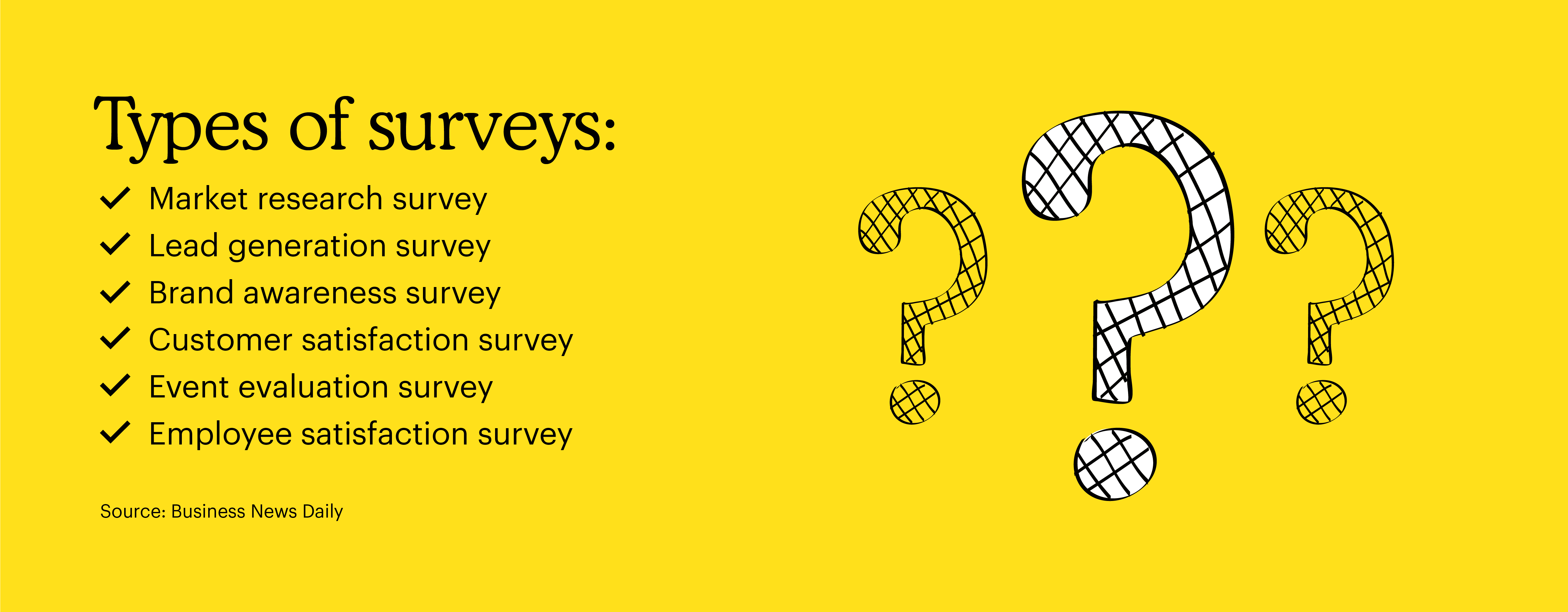How to analyze data from a survey
Knowing how to analyze survey data is vital to ensuring it’s interpreted and used correctly.
To help you leverage survey data, here’s how to analyze it:
Understand your sample size
Sample size refers to the number of subjects needed to make your survey statistically significant, meaning that the results are attributable to something specific rather than chance. Ideally, you want your sample size to accurately represent your audience in order to be precise. If it’s too small, you run the risk of skewed results. You can manually calculate your sample size (which can be time-consuming and challenging) or use a calculator.
Cross-tabulation of customer demographics
Cross-tabulation data analysis, which is also known as contingency table survey analysis, enables you to compare your data by breaking down results into multiple categories. Possible categories include:
- Geographic location
- Age
- Gender
With cross-tabulation, you can easily see your survey data and determine the relationship between survey respondents and their answers.
Spend time to really understand the data
It’s important to take your time analyzing survey data to better understand the results. Otherwise, you may accidentally miss vital details or make an error while calculating your results. To make analyzing data easier, consider using survey analysis software, like Mailchimp.
You can build your survey using Mailchimp tools and measure the results directly on our innovative platform. Plus, you can easily use your survey data to create marketing campaigns based on the answers of your audience and create audience segments.
Keep in mind that the key to using survey analysis at your business is to collect accurate and genuine responses. In order to accomplish this, it’s essential to ask the right questions and build the questionnaire according to your survey’s goals.

What to do once you’ve collected your survey results
So, you spent time collecting feedback and encouraging individuals to complete your survey–now what? Once you’re done compiling survey responses, it’s time to analyze, visualize, and present your data. You also want to determine how you’ll use the information you’ve collected.
Analyze data
There are many ways to analyze your data. For example, you can use specialized tools, software, or cross tabulation tables.
Visualize your data
After analyzing your data, you can display it visually. This can help you identify trends, outliers, opportunities, and patterns more easily and show the information in a digestible format. Visuals can also help you display your findings to audiences who aren’t familiar with the subject matter you’re discussing.
Here are a few ways to turn your quantitative and qualitative data into a visual:
- Pie chart
- Bar graph
- Infographic
- Area map
- Table
- Dashboard
- Histogram
- Treemap
- Line chart
Regardless of the type of visuals you create for your survey results, make sure the information you present is readable. If you’re using a chart or graph, don’t forget to include a key that describes what each color represents.
Determine course of action for results
You can use survey data to help you accomplish your marketing and business objectives. The information you collect from surveys is valuable since it provides insight into the wants and needs of consumers. You’ll have to determine how you want to use this information at your company and create a strategy to put it to good use.
Present results
When you’re done analyzing your data, creating a visual for it, and developing a plan for it, you can present your findings to stakeholders and other decision-makers, employees, or customers. You can turn your results into a comprehensive report that details key data points and actionable steps the company can take to improve. When building a survey report, make sure to include the following:
- Title page
- Table of contents
- Survey summary
- Intent behind survey
- Methodology
- Results
Graphics that can support your data
You can also turn your survey data into a slideshow presentation to make it more engaging and visually appealing to audiences.
How do you begin leveraging your survey report?
A survey is a powerful tool that can help you gather information about your audience, allowing you to gain a better understanding of your customers’ shopping behaviors and desires. Once you're done collecting responses, you can use survey results to enhance your sales and marketing efforts and build even better campaigns.
Not only can you build a survey, collect responses, and automate surveying with Mailchimp, but you can also analyze survey results in a centralized place. As a result, you can create tailored campaigns, boost customer satisfaction, improve products or services, and more. Use Mailchimp for your next survey and learn more about your audience with unlimited responses.


